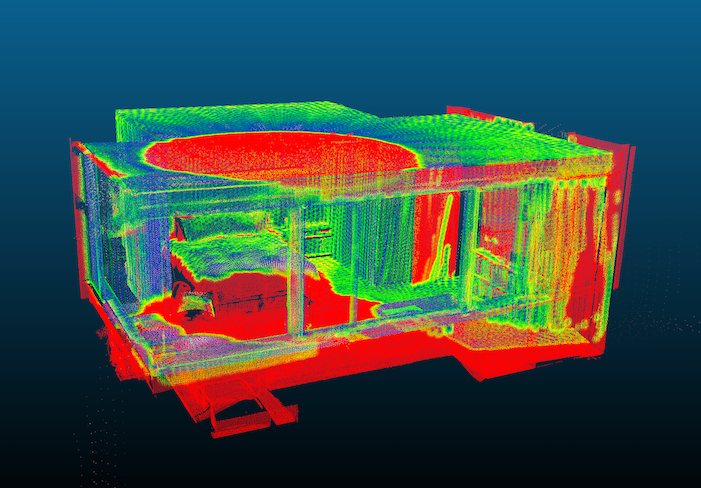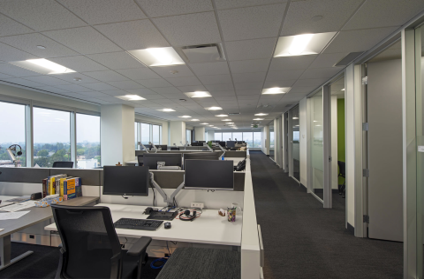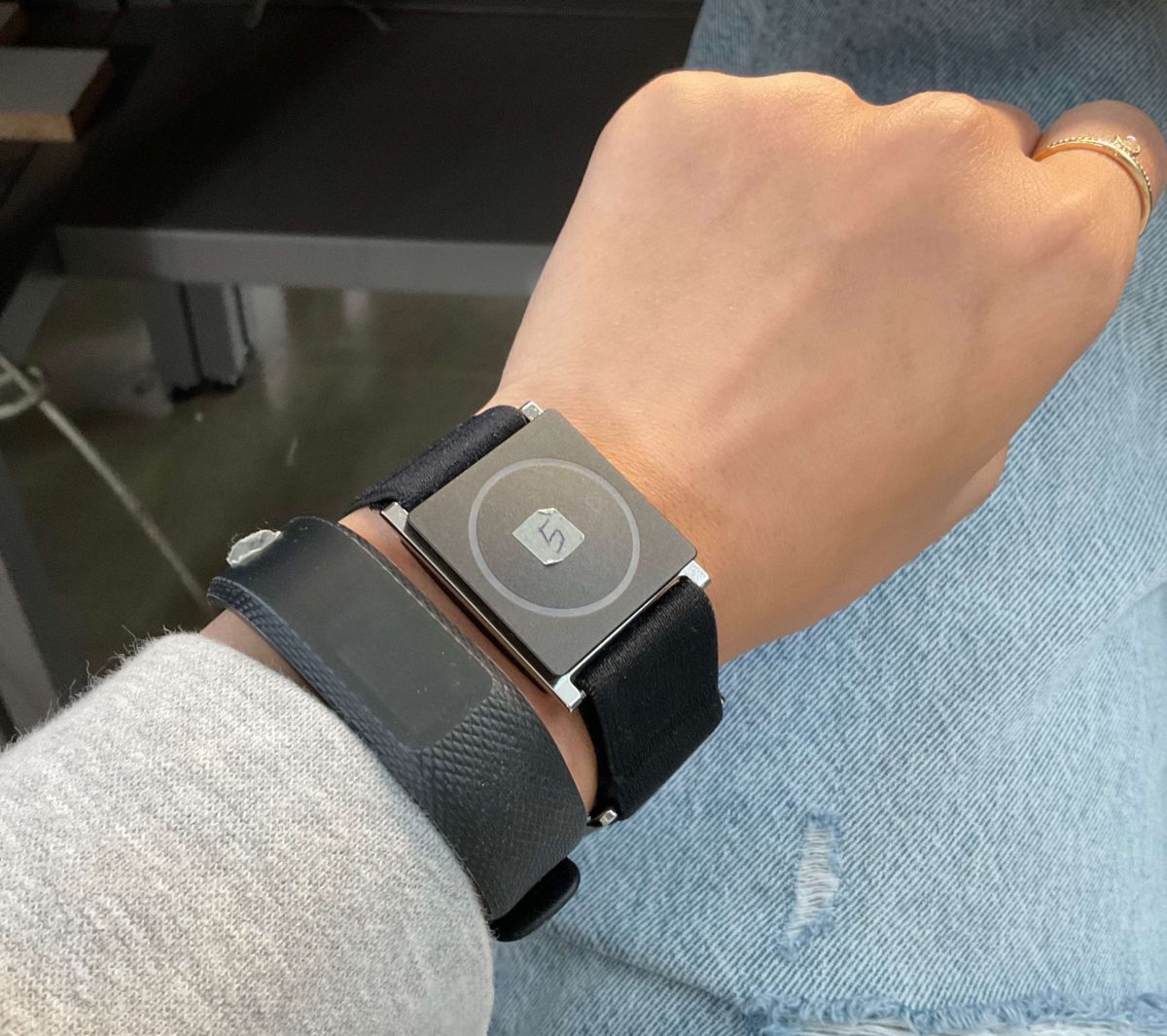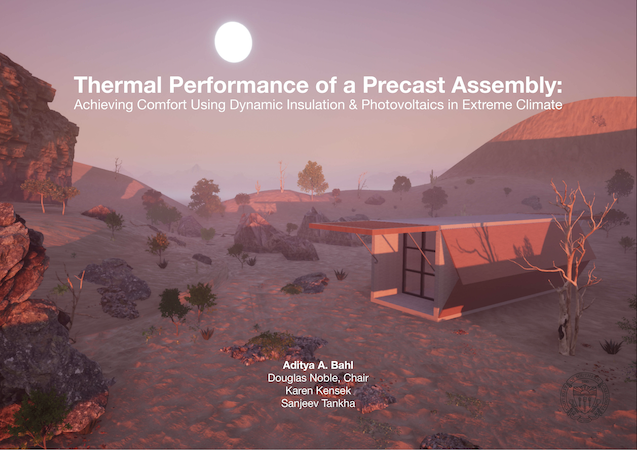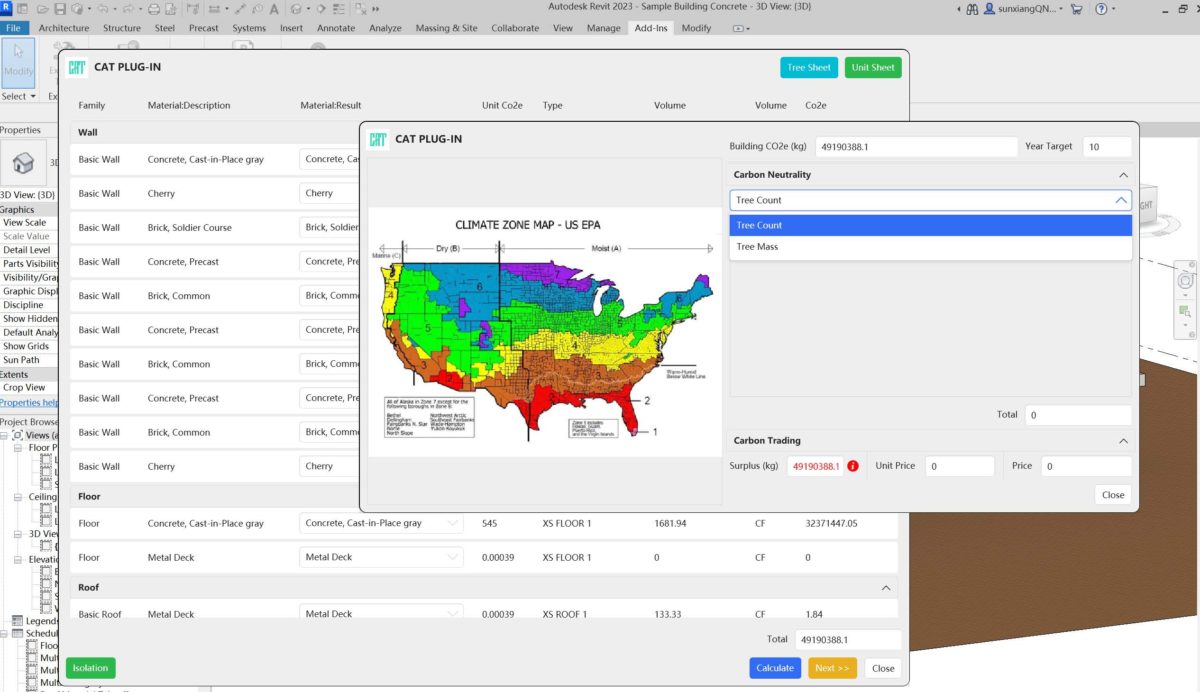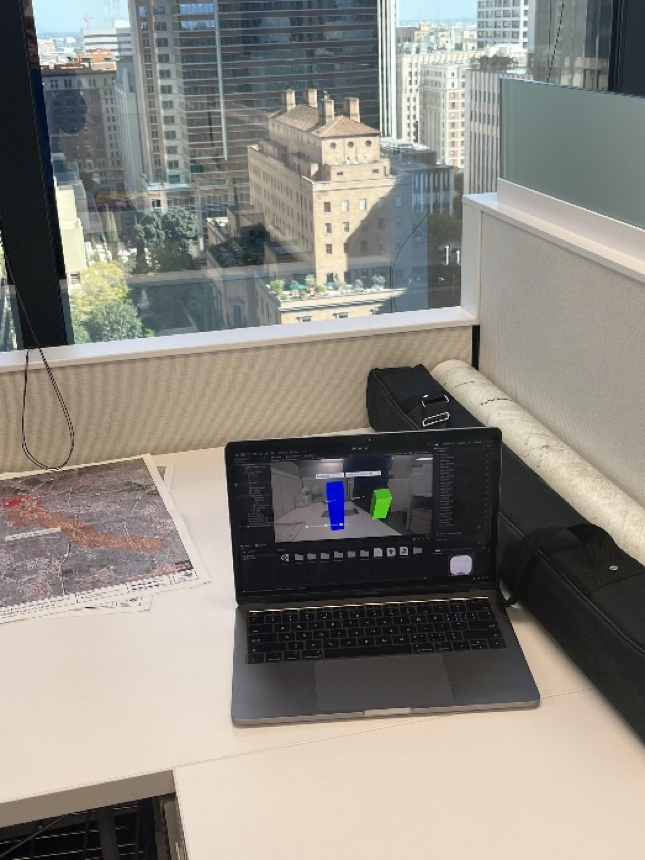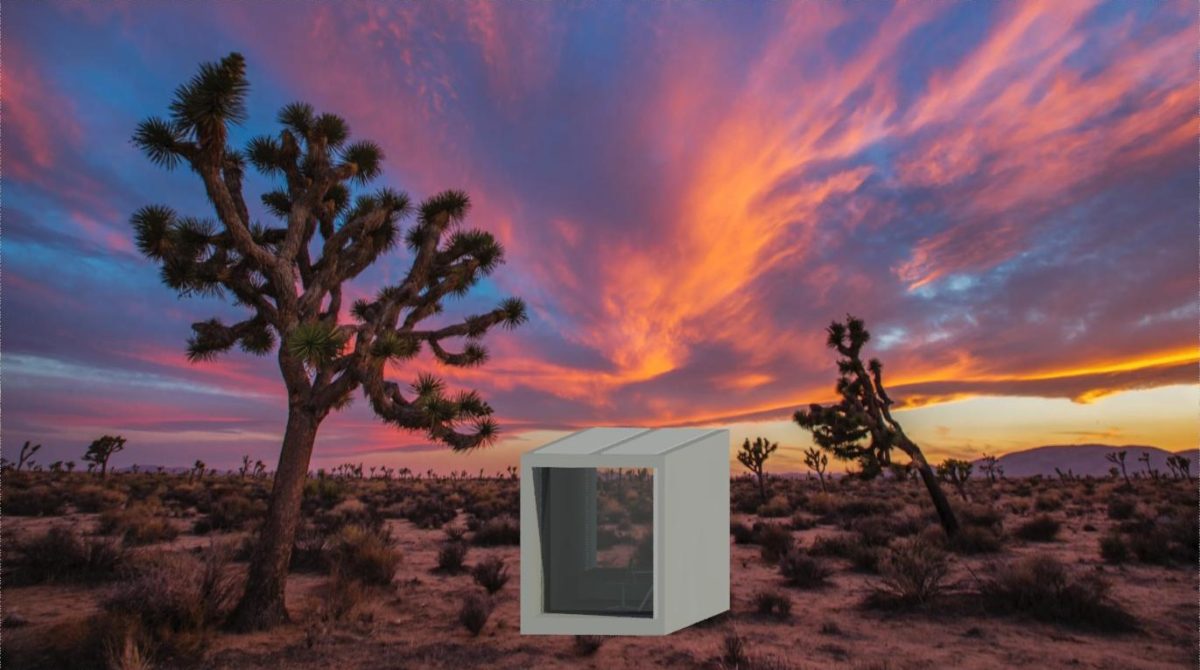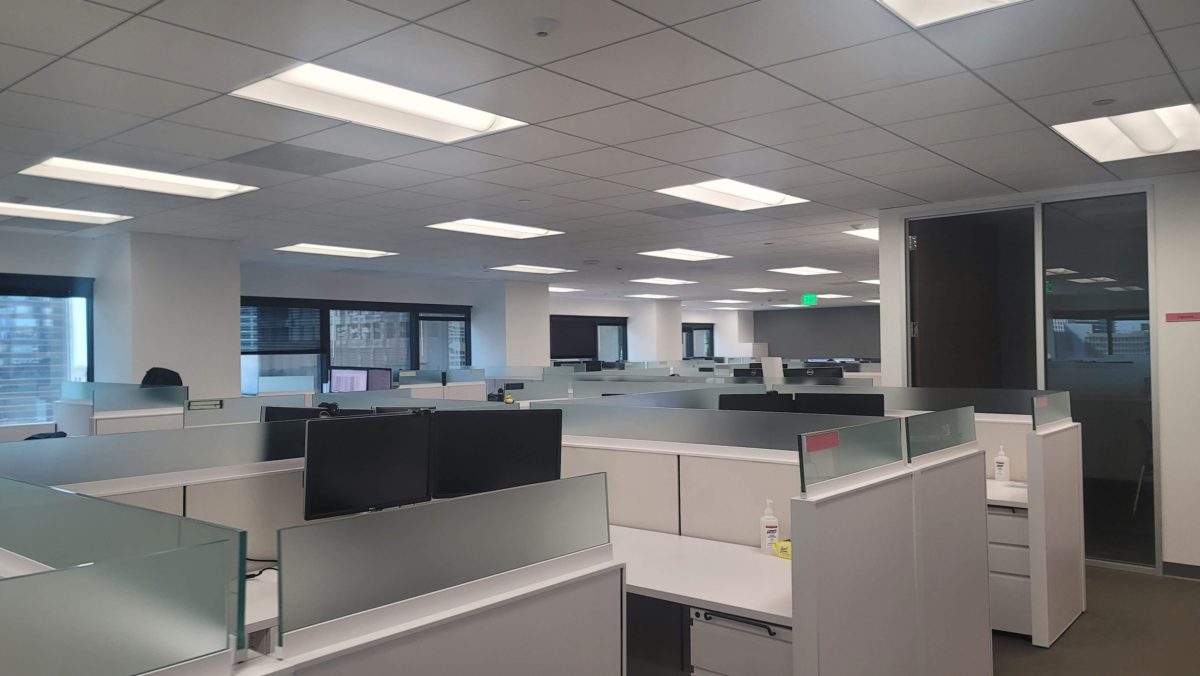The severe housing shortage for the seasonal rangers at Joshua Tree National Park can be resolved by providing housing that is modular and has a rapid production process. This housing can be made more sustainable by designing units that are fully self-supporting by creating a high-performance building enclosure that can regulate the thermal performance of the residence, and the south-facing wall – the face that receives maximum solar gain – can be used to achieve internal thermal Precast concrete is a good candidate material considering its high thermal mass and exceptional speed of construction. The simulation iterations include varying concrete thickness and exploring various insulating materials, their locations, and thickness. A dynamic external and internal insulating layer is proposed as a thermal battery strategy on the south wall, where the concrete wall is pumped up with heat; the exterior and interior insulations are regulated according to the outside temperatures and the concrete wall slowly dumps the heat to achieve thermal comfort inside. These iterations and simulations are tested and run on Honeybee Energy and IESVE.
The iterations on the south-facing wall show a thickness of 8 inches to be ideal with respect to thermal calculations and weight restrictions – with a dynamic thermal insulating layer, seasonally controlled to switch on and off according to the outdoor temperature. The indoor thermal comfort increases only by 29% if a dynamic insulating layer is added to the south wall, north wall, and the roof. Whereas the indoor thermal comfort increases by 40% if the dynamic insulating layer is added only to the south wall. This dynamic thermal insulation system with an 8” thick concrete wall can reduce the average indoor temperature and help increase the energy savings by 45% in Joshua Tree National Park for the designed small residence.
